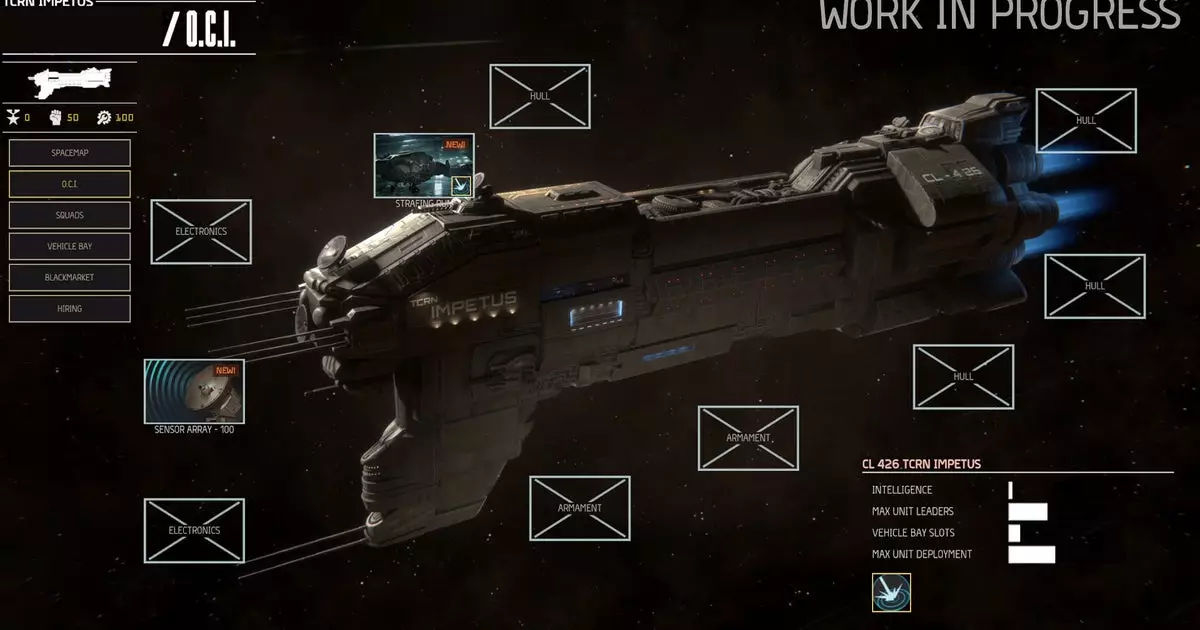The strategic gaming landscape has been fortunate to receive an influx of titles that prioritize tactical depth and immersive role-playing elements. One such title, Menace, stands out as an embodiment of a strategic turn-based experience rife with opportunities for players to engage deeply with both the characters and the overarching narrative. While Menace has already been described as “a tactically rich turn-based game,” it is essential to take a closer look at its intricate components that bind the strategic and role-playing elements into a cohesive experience.
The Holistic Game Framework
At its core, Menace offers more than mere turn-based combat. The game incentivizes players to explore a strategic layer that combines mission selection, squad improvements, and faction management. The strategic layer essentially serves as the connective tissue that not only enhances gameplay but also fosters player investment in the unfolding story. Players will find themselves navigating the Wayback solar system through a dynamic starmap, where each planet represents various factions with unique requests and dilemmas. Ignoring these requests can result in deteriorating relationships, a detail that adds depth to the player’s strategic decisions.
Much like a well-structured RPG, interactions with Non-Playable Characters (NPCs) are pivotal. As players choose to engage or prioritize missions, they must keep an eye on their reputations across factions, introducing an element of moral choice that influences gameplay and story outcomes. Players seeking to forge alliances must balance their commitments, making the journey not merely about reaching objectives but also about nurturing relationships and living with the consequences of their choices.
Resource Management and Squad Dynamics
The resource management system in Menace appears straightforward yet effectively adds layers of complexity. Players utilize Promotion Points for leveling up their squads, Operational Capability Improvements (OCI) to enhance their ship, and Authority Points to maintain crew morale. Each decision made impacts the team’s effectiveness, emphasizing the importance of foresight and tactical planning. Moreover, the game humorously characterizes crew members as “motley,” subtly hinting at the potential chaos and unpredictability of managing a diverse group of individuals.
Players are regularly confronted with scenarios that demand quick thinking—be it settling bar disputes or addressing maintenance issues that arise unbidden. These dilemmas encapsulate a classic strategy-RPG feel, where players must weigh instant solutions against long-term resource optimization. Ignoring issues may lead to more significant challenges down the line, thus enforcing strategic thinking and tactical foresight.
Combat in Menace is not merely about overwhelming firepower; rather, it emphasizes strategy and reconnaissance as pivotal elements. Players can equip their ship, the Impetus, with a range of enhancements that provide various tactical advantages. For instance, facilities for airstrikes or healing capabilities during missions can shift the course of a combat encounter. Yet, perhaps the most critical upgrade pertains to intelligence gathering, allowing players to survey enemy placements and prepare accordingly.
This prioritization of strategy over brute strength invites a refreshing shift in how players approach combat scenarios. While traditional games often reward firepower, Menace challenges players to become tactical thinkers who can discern when to strike, when to defend, or when to retreat. This balance fosters a rewarding gameplay experience where every decision carries weight and significance.
Customization in character development is another appealing aspect of Menace. Players select from unique weapons, armor, and vehicles in the armory, shaping not only the individual strengths of their squad but also the collective identity of their team. Each squad leader bears distinct traits that enhance their capabilities, further enriching the gameplay experience. The visual and functional diversity of characters contributes to players’ ability to create personalized squads that reflect their unique playstyles.
While Menace retains core strategy elements identifiable in traditional RPGs, it rings the changes through its character-specific perks and the implications of these choices. The promise of interconnected missions which await players hints at weaving an intricate narrative that evolves based on the squad’s dynamics and decisions.
As anticipation builds for Menace’s release, it is clear that the game combines rich strategic mechanics with immersive RPG elements. While some may perceive its strategy as conventional, the impact of player decisions and resource management breathes life into the gameplay. The game underscores the importance of both the strategic kernels and character relationships, allowing players to experience a rich tapestry that is well-developed, dynamic, and engaging. Menace promises to satiate not just the tactical appetites of gamers but also their longing for a deep, involving narrative journey. Ultimately, Menace is set to be a significant addition to the genre, inviting players to relish the subtleties that exist between tactical maneuvers and personal storytelling.

